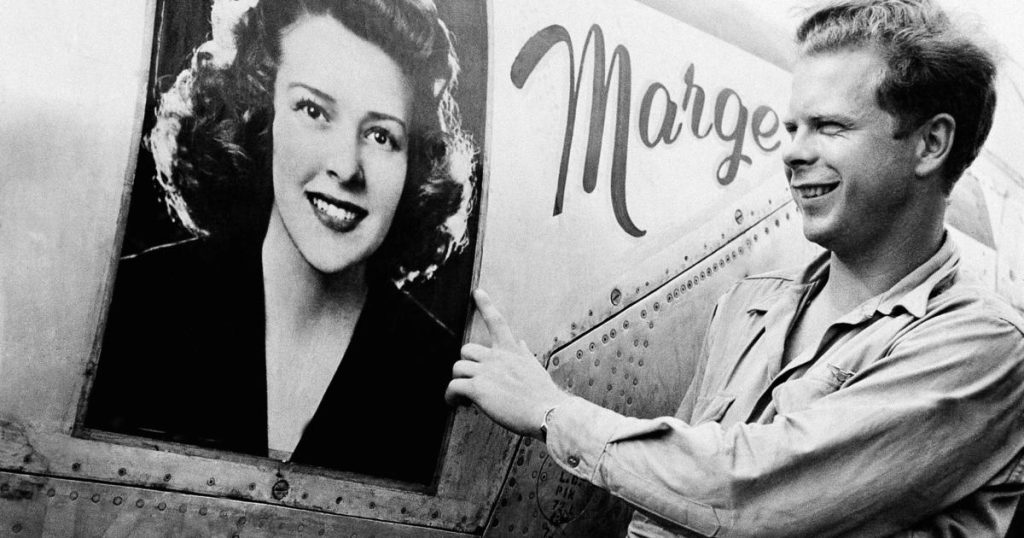The Richard I. Bong Veterans Historical Center in Superior, Wisconsin, is teaming up with the nonprofit Pacific Wrecks to search for the wreckage of World War II ace Richard Bong’s plane in the South Pacific. Bong, who was from Poplar, Wisconsin, is credited with shooting down 40 Japanese aircraft during the war, making him the top American ace. He flew a Lockheed P-38 Lightning fighter plane named “Marge” in honor of his girlfriend at the time, Marjorie Vattendahl. The plane crashed in Papua New Guinea in 1944 after experiencing engine failure, with the pilot Thomas Malone bailing out beforehand. Pacific Wrecks founder Justin Taylan will lead the search for the wreckage, with hopes of finding conclusive evidence that it is Bong’s plane.
Taylan plans to leave for Papua New Guinea in May to begin the search for the wreckage, a mission that could take almost a month and cost around $63,000 funded through donations. He is confident that historical records will lead them to the crash site, but uncertainty remains about the condition of the wreckage and if it will still be recognizable as Bong’s plane. Bong earned numerous accolades during his time in the war, including the Medal of Honor, the highest U.S. military decoration, for his actions in the Southwest Pacific area. His aggressive and daring flying resulted in shooting down eight enemy aircraft during a specific period, earning him the respect and admiration of his fellow soldiers and commanders.
In addition to the Medal of Honor, Bong also received the Distinguished Service Cross, two Silver Stars, seven Distinguished Flying Crosses, and 15 Air Medals for his outstanding service during World War II. Tragically, Bong’s life was cut short in 1945 when a P-80 jet fighter he was testing crashed in Burbank, California. His death coincidentally occurred on the same day that the United States dropped an atomic bomb on Hiroshima. Bong’s wife, Marjorie Vattendahl, who had become a model and magazine publisher after his death, passed away in Superior in 2003. The search for Bong’s plane comes at a time when other historical aircraft wreckage is being discovered in the South Pacific, such as the recent sonar image of what appears to be Amelia Earhart’s lost Lockheed 10-E Electra aircraft.
The search for Richard Bong’s plane highlights the importance of preserving and honoring the history of World War II and the sacrifices made by American soldiers during the conflict. Through efforts like this partnership between the Richard I. Bong Veterans Historical Center and Pacific Wrecks, the stories of these war heroes can be kept alive and their contributions remembered for future generations. The search for Bong’s plane also sheds light on the personal connection he had to his aircraft, as seen in his decision to name it after his girlfriend and place her portrait on the nose of the plane. This mission serves as a tribute to Bong’s legacy and the bravery and dedication he showed in combat, as well as a reminder of the ongoing efforts to honor and preserve the history of World War II.
As the search for Bong’s plane unfolds in the coming weeks, there is anticipation and hope that the wreckage will be found and positively identified as his famous “Marge” aircraft. The dedication and resources being put into this search demonstrate the importance of preserving the stories and artifacts of historical figures like Bong, whose actions had a significant impact on the outcome of World War II. The collaboration between the museum and the preservation group exemplifies a shared commitment to honoring the sacrifices and achievements of those who served during the war, ensuring that their legacies continue to be remembered and celebrated. Through this search for Bong’s plane, the spirit of heroism and valor that defined the World War II era is kept alive, inspiring future generations to appreciate and honor the bravery of those who fought for freedom and democracy.


